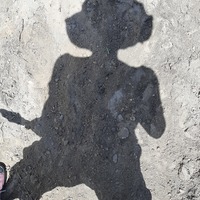Papers by Mordechai Duvdevani

BJU international, Jan 3, 2015
To compare outcomes with the use a pre-operative double J stent in ureteral and renal stone treat... more To compare outcomes with the use a pre-operative double J stent in ureteral and renal stone treatment with ureteroscopy (URS). The Clinical Research Office of the Endourological Society (CROES) URS Global Study collected prospective data on consecutive patients with ureteral or renal stones treated with URS at 114 centres around the world for 1 yr. Pre-operative double J stent placement was used in a subset of patients. To examine the relationship of a pre-operative double J stent placement on stone free rate (SFR), length of hospital stay (LOHS), operation duration and complications (rate and severity), the Inverse Probability Weighted Regression Adjustment (IPWRA) was used. Of the 8189 patients with ureteral stones a comparison was made of 978 (11.9%) and 7133 patients with and without a pre-operative double J stent, respectively. Of the 1622 patients with renal stones, 590 (36.4%) underwent preoperative stenting with a double J stent and 1002 did not. In renal stone treatment, a ...
The Journal of Urology, 2015
Clinical Genitourinary Cancer, 2016

International urology and nephrology, 2016
To externally validate Resorlu-Unsal stone score (RUSS) and to evaluate its predictive accuracy. ... more To externally validate Resorlu-Unsal stone score (RUSS) and to evaluate its predictive accuracy. Data of patients who underwent retrograde intrarenal surgery (RIRS) between October 2013 and June 2015 were collected. RUSS was applied to all patients, and the nomogram was externally validated. Area under the curve (AUC) was used for clinical validity assessment. A total of 85 patients were included in the study. Mean patient age was 54.3 ± 16.5, and mean stone size was 12.0 ± 6.21 mm. After applying RUSS, 56.5, 28.2, 9.41, and 5.88 % had score 0, 1, 2, and 3, respectively. RUSS was significantly associated with stone location and size. Postoperative stone-free rate was 74.1 %. Postoperative outcomes were significantly associated with RUSS and stone size. RUSS was found to be the only significant independent predictor in multivariate analysis, while it provided high predictive accuracy with an estimated AUC of 0.707. RUSS is a simple scoring system that may predict postoperative stone-...
Canadian Journal of Surgery Journal Canadien De Chirurgie, Oct 1, 2009
Background: Complicated choledocholithiasis cannot always be managed by standard surgical, radiol... more Background: Complicated choledocholithiasis cannot always be managed by standard surgical, radiologic or endoscopic methods. One additional approach is to use percutaneous techniques developed by endourologists to treat renal calculi. In this report, we present our experience over the past 10 years with this novel approach.

The Journal of urology, Jan 24, 2016
To our knowledge the effect of testicular torsion on the pregnancy rate is unknown. In this study... more To our knowledge the effect of testicular torsion on the pregnancy rate is unknown. In this study we focused on the pregnancy rate, which is the ultimate index of fertility status. We reviewed the records of 273 patients who presented to our emergency room with testicular torsion between 1994 and 2014. Study inclusion criteria included being in a relationship with the intent to conceive for at least 1 year, age greater than 25 years and a normal contralateral testis. Patients with primary infertility, those who were unwilling to participate or unreachable and those with a history of undescended testis and/or varicocele were excluded from analysis. Patients were contacted by telephone and interviewed according to a standardized questionnaire. Pregnancy rates in the orchiopexy and orchiectomy groups were compared to each other and to the accepted pregnancy rate in the literature. A total of 63 patients met study inclusion criteria, including 41 and 22 in the orchiopexy and orchiectomy...

Journal of Endourology Endourological Society, Dec 22, 2011
Biofilms on the surfaces of urinary catheters are among the pivotal factors for recurrent and per... more Biofilms on the surfaces of urinary catheters are among the pivotal factors for recurrent and persistent infections in urology. Many techniques have been investigated and applied for eradication of these biofilms--but with no full success. The aim of this study was to examine the effect of sustained release medicated varnish, releasing chlorhexidine, on the formation of biofilm on the urinary catheter surface in an in-vitro model. A batch model was used to test the antibacterial/antibiofilm effect of the sustained release varnish: Catheter pieces coated with sustained release varnishes were placed in bacterial growth medium that was infected with Pseudomonas aeruginosa for 96 hours. Various concentrations of chlorhexidine impregnated in the varnish were tested. After the incubation period, the catheter pieces were assessed for biofilm formation by measuring the optical density, colony-forming units, and using confocal laser scanning microscopy, and electron scanning microscopy. Biofilm growth measurement (colony-forming units [CFU]) on the catheter surface coated with the various concentrations of chlorhexidine in sustained released varnish revealed a 94% reduction with 1% chlorhexidine (P<0.0001) and 43% reduction with 0.1% chlorhexidine (P=0.08) coated varnish in comparison with a positive control or the placebo varnish in preventing biofilm growth of P. aeruginosa. These biologic assays were confirmed using confocal and electron microscopy. Of the various tested concentrations of sustained release varnishes, the 1% chlorhexidine concentration has demonstrated the superior antibiofilm effect on urinary catheters with P. aeruginosa. Although similar varnishes are used in dentistry, it needs extended research in animals before applying this technology in human trials.
The Journal of Urology, 2016

Frontiers in oncology, 2016
High-grade urothelial carcinomas (UCs) often show foci of variant differentiation. There is limit... more High-grade urothelial carcinomas (UCs) often show foci of variant differentiation. There is limited information in the literature about the response of these variant urothelial tumors to immunotherapy with bacillus Calmette-Guerin (BCG). We compared the response, to treatment with BCG, of UC containing glandular, squamous, nested, and micropapillary types of differentiation to response of conventional non-muscle invasive high-grade UC. A total of 100 patients were diagnosed with variant histology urothelial cancer between June 1995 and December 2013. Forty-one patients with Ta or T1, confirmed by second look biopsies, received immunotherapy with BCG. Fourteen patients in this group were diagnosed with micropapillary differentiation, 13 patients with squamous differentiation, 9 patients with glandular differentiation, and 7 patients with nested variants. The control group included 140 patients with conventional high-grade UC. Both groups have been treated and followed similarly. Pati...

ABSTRACT Purpose: Major pelvic trauma is more devastating in prepubertal children than in adults ... more ABSTRACT Purpose: Major pelvic trauma is more devastating in prepubertal children than in adults because of their small bodies and the soft pelvic bony ring. Among other disabilities caused by trauma to the lower urinary tract (LUT), urinary incontinence, secondary to damaged bladder neck (BN), is the most frustrating. We reviewed our experience with such injured children, and discussed management options, and outcome, with and without sphincteric injury. Methods: Retrospective review of our trauma registry for all prepubertal children, with severe LUT injury due to major blunt pelvic trauma between 1993 and 2011 was conducted. This study was approved by the institutional review board. Results: Eighteen patients were identified, and divided into 2 groups. Group 1 consisted of 8 patients (3 males, 5 females, aged 2-10 years, mean 8) who sustained pelvic trauma with severe demolishing injury to the BN. Group 2 included 10 males (aged 5-11 years, mean 8.2) with pelvic trauma without damaged BN. The 10 male urethral injuries in this group included membranous-7, bulbar-2, and combined-1, with average urethral stricture length 2.67 cm, range 1-4. Additional genital injuries included vaginal avulsion-5, and testicular laceration-2. Non-urogenital injuries included pelvic fracture-16, rectal tear-4, rectovesical fistula-2, crush injury to the thigh-2, and lacerated spleen-1. Five patients sustained hemorrhagic shock. Initial management included insertion of suprapubic cystostomy (SPC)-17 (one was converted to vesicostomy), primary urethral realignment-2, pelvic fixation-5, colostomy-4, internal iliac artery embolization-2, splenectomy, above knee amputation, and orchidectomy-1 each. Average time to urological reconstruction in group 1 was 53 months (range 11 to 96), mostly due to prolonged orthopedic rehabilitation, and psychological immaturity, and in group 2, 8.3 months (range 6-18, p<0.05). Prior to reconstruction, all group 1 patients had small-volume high-pressure fibrotic bladders, with vesicoureteral reflux in 6 renoureteral units. None of group 2 patients sustained significant bladder injury. LUT reconstruction in group 1 included bladder augmentation-5, Mitrofanoff urinary diversion-5, ureteroneocystostomy 6 units, BN closure, vaginal reconstruction, and rectovesical fistula repair 2 each, and Malone Continence Enema-1. One female patient, whose urethra was detached from the BN, required temporary catheter drainage only in order to achieve continence, while voiding spontaneously. Two females still await reconstruction. Urinary continence with intermittent catheterization was achieved in all group 1 reconstructed patients during 6-144 month follow-up. All male patients in group 2 underwent anastomotic urethroplasty. Eight (80%) patients were able to void with average Qmax of 15.5 ml/sec (6.5-25.9), with average post-void residual of 6.25 ml (0-30). Urethroplasty failed in two. Five males lost erections permanently. Conclusions: Complex LUT injuries in pre-pubertal children can be successfully repaired, and urinary continence is achievable, even in severe BN injuries. Musculoskeletal rehabilitation and psychological status are important factors for BN reconstruction timing.

World Journal of Urology, 2015
To identify independent predictors for postoperative stone-free status after percutaneous nephrol... more To identify independent predictors for postoperative stone-free status after percutaneous nephrolithotomy (PCNL) for staghorn stones and to compare Guy's, CROES and STONE nomograms regarding their predictive ability and accuracy specifically for staghorn stones. Data of 286 patients who underwent PCNL in our department were collected and analyzed. Several parameters, including the three nomograms, were analyzed to reveal independent predictors for postoperative stone-free status. The area under the curve was used to assess the predictive ability of the independent predictors. A total of 73 staghorn calculi were identified with mean stone burden of 1253.5 mm(2). Mean Guy's, CROES and STONE score was 3.34, 125.8 and 9.95, respectively. Postoperative stone-free rate was 65.8 %. In univariate analysis, all three nomograms were significantly associated with stone-free status. However, STONE was the only significant independent predictor in multivariate analysis. STONE also revealed the highest predictive accuracy compared to Guy's and CROES nomogram. STONE nephrolithometry was found to be the only predictor for stone-free rate after PCNL for staghorn stones compared to Guy's and CROES nomograms.
The Journal of Laboratory and Clinical Medicine, 2003
Canadian Urological Association Journal, 2015
We present a case of left renal colic in a 25-year-old female patient. She had subureteral inject... more We present a case of left renal colic in a 25-year-old female patient. She had subureteral injection of Teflon (STING) at the age of 10 due to vesico-ureteral reflux (VUR) disease and recurrent urinary tract infections. Renal colic was the result of late ureteral obstruction due to Teflon-induced periureteral foreign body reaction. To our knowledge, this is the longest interval between STING and ureteral obstruction reported and the first case of delayed ureteral obstruction caused by Teflon. Monitoring the upper tracts of patients after STING should go beyond childhood.

Prague Medical Report, 2015
To evaluate the impact of ureteral stenting history to the outcomes of extracorporeal shockwave l... more To evaluate the impact of ureteral stenting history to the outcomes of extracorporeal shockwave lithotripsy, we retrospectively analysed patients who underwent shockwave lithotripsy with Dornier Gemini lithotripter between September 2010 and August 2012. Forty seven patients (group A) who had a double J stent which was removed just before the procedure were matched-paired with another 47 patients (group B) who underwent shockwave lithotripsy having no stent history. The correlation between ureteral stenting history and stone-free rates was assessed. Stone-free rates were 68.1% and 87.2% for patients of group A and B, respectively (p=0.026). Postoperative complications were not different between groups. Multivariate analysis revealed that stone size (p=0.007), stone location (p=0.044) and history of ureteral stenting (p=0.046) were independent predictors for stone clearance after shockwave lithotripsy. Ureteral stents adversely affect shockwave lithotripsy outcome, even if they are removed before the procedure. Stenting history should divert treatment plan towards intracorporeal lithotripsy.

International Urology and Nephrology, 2015
To compare the efficacy and safety of 365- and 550-μm Ho:YAG laser fiber in semirigid ureteroscop... more To compare the efficacy and safety of 365- and 550-μm Ho:YAG laser fiber in semirigid ureteroscopic lithotripsy and to identify parameters that may affect laser energy and time during the procedure. A database of 111 patients who undergone a semirigid ureteroscopy (SRURS) for ureteral stone lithotripsy was analyzed. A 365-μm core fiber was used in 56 cases, and a multiple-uses 550-μm laser fiber was used in 55 cases. A standard 6.4 W protocol (8 Hz, 0.8 J/pulse) was used in all cases. The association between laser fiber diameter and several preoperative, intraoperative and postoperative parameters was evaluated. Mean stone burden was 54.1 ± 39.1 mm(2), and postoperative stone-free and complication rate was 100.0 and 16.2 %, respectively. The 550-μm laser fiber diameter was significantly associated with lower laser energy (p = 0.01), energy/mm(3) (p = 0.031), number of pulses (p = 0.012), laser time (p = 0.012) and laser time/mm(3) (p = 0.043), while it did not affect postoperative outcomes. The multivariate analysis showed that shorter procedure duration, smaller stone burden and the 550-μm laser fiber were all significant independent predictors for decreased laser energy consumption. The 550-μm laser fiber may decrease laser energy and time during SRURS lithotripsy with Ho:YAG laser compared to the 365 μm. Given its lower cost, it may represent the optimal choice for semirigid procedures.

The Journal of Urology, 2015
To externally validated CROES nephrolithometry and to evaluate the predictive accuracy of the nom... more To externally validated CROES nephrolithometry and to evaluate the predictive accuracy of the nomogram. Data of patients who undergone percutaneous nephrolithotomy (PCNL) between January 2012 and February 2015 was collected. CROES was applied to all patients and the nomogram was externally validated. Area under the curve (AUC) and calibration plot were used for discrimination and clinical validity assessment. A total of 176 patients were included in the study. Mean patients' age was 55.2 ± 13.9. and mean stone burden was 640.0 ± 911.4 mm(2). CROES nomogram was significantly associated with number, location, and burden of the stone and with the number of implicated calyces, punctures and tracts. Postoperative treatment success rate was 85.8%. Number of stones, number of implicated calyces and CROES score were found to be independent predictors of treatment success. The estimated AUC was 0.715 and the model provided good calibration. CROES nomogram is an accurate tool for estimating renal stone complexity. CROES nephrolithometry provides great accuracy in predicting postoperative efficacy.

Journal of Endourology, 2015
To identify parameters predicting prolonged fluoroscopy time during percutaneous nephrolithotomy ... more To identify parameters predicting prolonged fluoroscopy time during percutaneous nephrolithotomy and to evaluate the predictive ability of Guy's stone score, S.T.O.N.E nephrolithometry and CROES nomogram. We evaluated 153 consecutive patients who underwent a PCNL by a single experienced surgeon. Several preoperative, intraoperative and postoperative parameters, including the three scoring systems, were assessed for their ability to predict fluoroscopy time. Fluoroscopy time was significantly associated with stone burden, stone location, number of stones, number of punctures and number of tracts. It was also significantly associated with all scoring systems. Fluoroscopy use was significantly higher in patients who were successfully treated and in these with longer hospitalization, probably reflecting case complexity. No association was found with postoperative complications. Fluoroscopy time during percutaneous nephrolithotomy can be affected by several parameters. Identifying the ones that can affect fluoroscopy time can lead to fluoroscopy and radiation exposure decrease. Guy's stone score, S.T.O.N.E. nephrolithometry and CROES nomogram can all predict complexed cases and the need for increased FT.

Urolithiasis, Jan 18, 2015
The purpose of this study was to identify parameters that affect fluoroscopy time during ureteros... more The purpose of this study was to identify parameters that affect fluoroscopy time during ureteroscopy or retrograde intrarenal surgery (RIRS) and to evaluate the potential role of surgical experience gained during a fellowship program in decreasing radiation exposure. A database of patients who underwent ureteroscopy or RIRS was evaluated. Procedures were performed either by an experienced Endourologist (surgeon A) or by an Endourology fellow. Operations performed by the fellow were further divided to them performed during fellow's 1st year of training (surgeon F1) and 2nd year of training (surgeon F2). The association between fluoroscopy time and several factors was evaluated. Eighteen (19.6 %) procedures were performed by surgeon F1, 13 (14.1 %) by surgeon F2 and 61 (66.3 %) cases were performed by surgeon A. Fluoroscopy time was significantly higher in cases performed by surgeon F1 compared to surgeon F2 (p = 0.025) and A (p = 0.001). However, there was no difference between ...

Scandinavian journal of urology, 2013
This study aimed to explore the relationship between stone density and outcomes of percutaneous n... more This study aimed to explore the relationship between stone density and outcomes of percutaneous nephrolithotomy (PCNL) using the Clinical Research Office of the Endourological Society (CROES) PCNL Global Study database. Patients undergoing PCNL treatment were assigned to a low stone density [LSD, ≤ 1000 Hounsfield units (HU)] or high stone density (HSD, > 1000 HU) group based on the radiological density of the primary renal stone. Preoperative characteristics and outcomes were compared in the two groups. Retreatment for residual stones was more frequent in the LSD group. The overall stone-free rate achieved was higher in the HSD group (79.3% vs 74.8%, p = 0.113). By univariate regression analysis, the probability of achieving a stone-free outcome peaked at approximately 1250 HU. Below or above this density resulted in lower treatment success, particularly at very low HU values. With increasing radiological stone density, operating time decreased to a minimum at approximately 1000...











Uploads
Papers by Mordechai Duvdevani